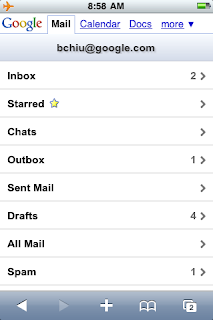A few weeks ago, we
introduced location extensions - the new way to run local ads in AdWords. Today, we wanted to tell you a bit more about location extensions and give you some best practices for setting them up in your account.
First, it's important to know that there are two ways to set up extensions. You can set up extensions at the campaign level or at the ad level.
Setting up campaign level extensions means that Google will dynamically match a campaign's text ads with the most relevant address in your account based on information like a user's location or a user's search terms. Keep in mind that the address will only be shown when it's relevant to the user's location or search terms. We'll use a fictional chain of coffee shops, Bob's Coffee, to illustrate when you'd want to add campaign level extensions:
Add campaign level extensions when you want to...
- Use the same ad text across a number of business locations. For example, Bob has a "buy one cup, get the second free" discount at all his coffee shops. Bob can create one ad and run campaign level extensions because his ad text for this discount is applicable to all his locations.
- Direct ads for all of your locations to the same landing page. For example, all of Bob's stores feature the same drinks and prices, so he has a single webpage to greet online users regardless of their location.
- Create and edit a lot of ads quickly. For example, Bob's Coffee is introducing a "$1 latte Tuesdays" promotion at all its stores. If Bob creates a new campaign for this promotion and sets up campaign extensions, he only has to create one ad, and that ad will be able to show with any of the addresses associated with that campaign.
Ad level extensions allow you to override a campaign's location extension settings. When you use ad level extensions, you are selecting one address to show with a specific ad.
Create ad level extensions when you want to...
- Associate a single address with a specific marketing message. For example, Bob wants to test out a promotion at just one location before implementing it for all stores. He is going to offer a "Case of the Mondays" special, a free upgrade to a large coffee when you a buy medium coffee on Monday. Bob has created an ad to go with this promotion and only wants this ad to show for the one location where he's running the promotion. He doesn't want AdWords to match the ad to any of his other addresses, so he overrides the campaign setting with an ad level extension.
- Direct each ad to a specific landing page. Bob has also created a separate landing page within his website to promote the "Case of the Mondays" promotion. He wants to direct most of his users to the main webpage via his regular campaigns, but wants to direct viewers of the "Case of the Mondays" ad to a page specifically for the promotion.
If ad level extensions better meet your needs,
read more about how to start using them. Remember, you can use a mix of campaign and ad level extensions in your account.
Adding addresses to AdWords
When you're setting up your extensions, you should also know that there are two ways to give your addresses to Google: use the
Local Business Center or enter addresses manually into AdWords.
If you're a primary business owner, you should use Local Business Center to give your addresses to Google. The Local Business Center is a free tool that allows you to manage your business listings. Addresses you enter manually or through bulk upload here will affect how your free business listings and ads appear on Google.com and Google Maps. If you plan to use Local Business Center, you can
learn more about how it works with extensions.
If you're not the primary business owner of the locations in your ads, you can manually enter addresses into AdWords. An example of a non-business owner might be a wireless hotspot company that provides Internet access at Bob's Coffee. The company doesn't own any of the Bob's Coffee locations, but might want to advertise that their Wi-Fi services are available at a Bob's Coffee location.
Whichever method you choose, you can add addresses from the same place in AdWords, in the Audience section of the Settings tab.
Posted by Trevor Claiborne, Inside AdWords crew









